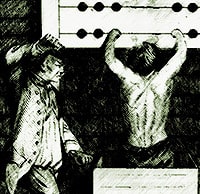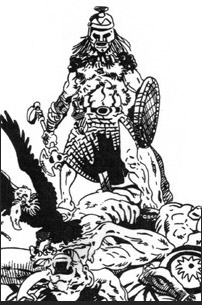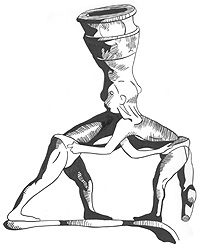Thank you sir!
If you don't mind, I have question...which may have been already addressed somewhere on your website, but I haven't stumbled upon it yet.
Namely, would you have a preferred approach for the order/progression of learning and developing functional self-protection skill set, for a person whose aim is to survive (maybe even thrive?) in a modern deteriorating urban living environment?
Also, if we took the legal/social/political aspect out of the equation, what would be the optimal progression of developing a well rounded and comprehensive fighting skill (empty handed, blunt, and bladed, maybe even the mixed format included)?
Sincere gratitude and best wishes!
Dragan
…
Dragan, for urban training I recommend the following:
-1. Walk your living area for 3 blocks in each direction each day, paying attention to sign, like needles, shell casings, hair extensions, trash, to determine who goes there in the dark.
-2. Now walk it at night: dusk, midnight and predawn.
-3. Walk egress and access routes to the nearest evacuation point by day, dawn, noon, late afternoon.
-4. Walk your work area the same way, during the day.
-5. Walk to and from work and home at least once in each direction.
You are now forming a mental map that only you have of your area of operations.
-6. Only shop local, in part, because these shops will give you actionable intelligence. Do not drive to the best deal, but buy in your work and living zones and get to know the business owners, shift managers, etc.
-7. Scout the nearest crime locations: schools, courthouses, police stations, malls, major transit hubs and other places where violent actors strike out from.
-7. Do not clean up trash and especially not hardware. If you see a brick somewhere, leave it there and map it. This is your improvised weapon locker.
-8. When not out and about, run meditation scenarios in these locations from optimal to disastrous.
-9. Now drive these same routes and note what you saw on foot but missed in the car. When you drive new areas, this will help you map the gaps in your motorist perception. Drive slowly.
-10. Never sit in a vehicle that is not running with your hands on the controls. If you must wait, stand by your vehicle. This is not just for defense, but to increase your observations.
-12. Take mass transit, using your pedestrian view of things and the gap awareness from your motor scouting and assess the various routes and hubs, especially the characters at the stops.
-13. Never stop building the map of the war zone. As hunters update their knowledge of the habitat they hunt, you must update yours.
-14. Think like a criminal and plan gun, knife, club and empty hand crimes to serve as the basis for later scenario work.
Now, for fighting progression, I am assuming a youth or adult, not a child, a person physically a man if not yet fully developed.
The reference point should be grappling, that is, just as Hell and The Pit are the reference point for the Christian wishing to go to Heaven, something to be aware of, avoided and escaped. Cops, gangs, mobs, bigger men, knifers, they all want to grab you. So, when training your progression, work out of and into the clinch and make clinching and counter clinching part of every aspect. For instance, part of every boxing session should be devoted to one boxer trying to clinch and the other trying to avoid it.
#1 is stick work. Learning the stick will help develop blade skills and the relaxation necessary for effective boxing. It also takes from 3 months to a year to develop the forearms for power work. Blade first does not develop the appreciation for power necessary for blunt extension weapons. Stick has the greatest range variation of the skill sets.
#2 is blade work, especially if legalities are not an issue.
#3 is grappling, which must be learned to avoid being grapples just as the above arts develop the ability to counter the crude use of those same weapons when you are unarmed.
#4 is boxing. By placing boxing last, you will not become the best boxer you could be. But boxing leverage requirements can get you killed in knife work and clinched and taken down by a grappler.
We have recently, in Portland, developed a sparring flow that goes like this:
-Boxing
-Stick
-Knife
-Boxing
We have variations in each set, various lengths of stick, goals such as to clinch, asymmetrical boxing against grappling, stick against grapple, knife versus empty hand, etc. With boxing, start at clinch range and box out, then box in, before doing freestyle boxing.
With all arts set sparring goals, such as this stick round is not over until someone clinches, until someone scores, checks and scores in sequence, etc. In boxing, the man who scores a combo and is not countered and achieves angle and range, causes a restart, with the partner now set to this goal.
Grappling needs to be worked on on surfaces that I generally do not have access to. In a dojo, I would take the sequence above and place grappling first and last, bracketing the boxing.
I have no real knowledge of firearms or where they should fit into such a scheme.
Good Luck, Sir.











This is pretty big if people would get over themselves and do it.